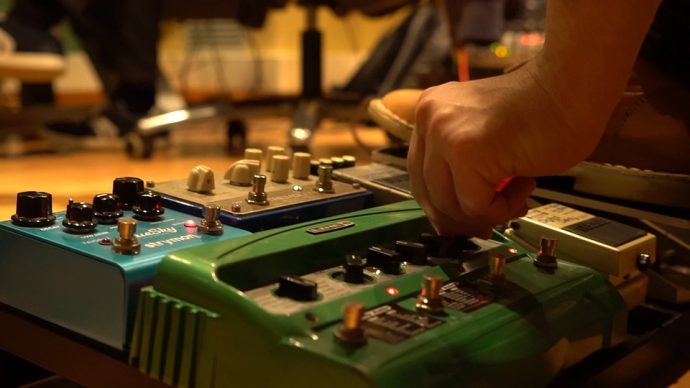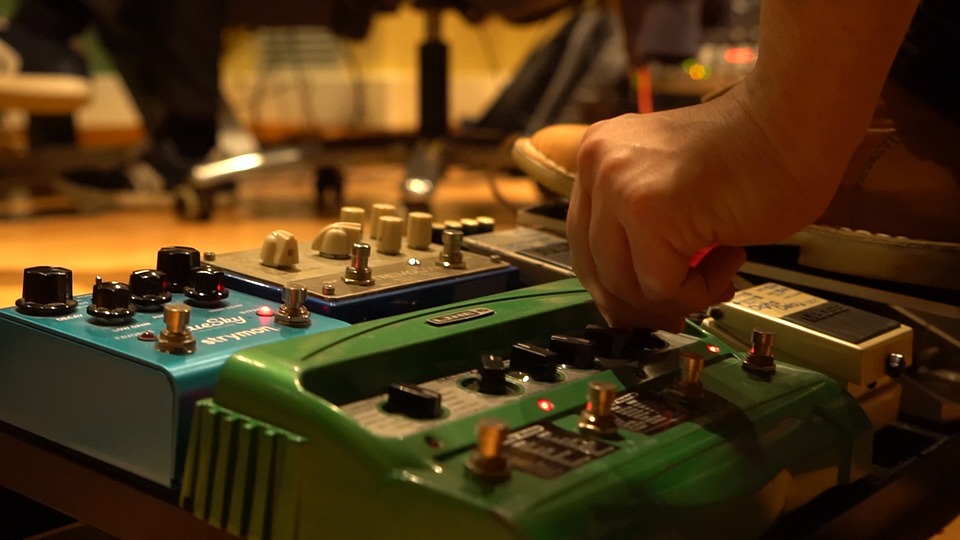
There are more than 20 types of guitar effects pedals and literally thousands of individual models to choose from. Every year, hundreds more are added to the list, from new experimental pedals by independent producers to amped-up versions of classics by big names. This is why using guitar pedals tends to be confusing for beginners. But there are ways to simplify the learning process for choosing and using guitar effects.
Dynamic Effects
These are the most subtle effects pedals and arguably the best place to start. Compressor pedals do exactly as the name suggests: they compress the signals of your instrument for a punchier and more sustained tone, in a volume that allows the dynamics of all strings to shine through without any distortion or levelling out. Boost pedals are basically simplified compressors, allowing you to raise weak signals while keeping everything clean. Both pedal types are widely used by blues and rock guitarists to tighten their signals. Starting with any of these subtle, dynamic effects pedals can give you a better understanding of how pedals modify guitar signals, which will prepare you to use complex effects or combine pedals.
Pitch Effects
These pedals modify your signal based on the pitch. Octave, harmoniser, and pitch shifter pedals act in almost the same way. They allow you to overlay your signal with notes that are one or more pitches below or above whatever you’re playing. Depending on the available settings, you can use them to thicken your tone, create organ-like effects, or make it sound like you’re playing completely in-sync with another guitarist or bassist.
Drive Effects
Perhaps the most popular out of the different pedal categories, drive effects are the most commonly used in the worlds of rock, pop rock, metal, grunge, and punk. Overdrive pedals are what gives these hard-hitting genres that signature gritty crunch commonly associated with classic rock. Distortion pedals are basically overdrive pedals with a gnarlier tone, while fuzz pedals work much in the same way as the two but with a focus on beefing up guitar tones. These are the pedals you want to use if you want that crunchy, distorted, beefy sound without breaking your amps.
Modulation Effects
These are the pedals used for modulating your guitar signals in different depths and speeds. Chorus pedals are like pitch or harmoniser pedals that allow you to sound like you’re playing the same thing with different guitarists who are either slightly out-of-tune or delayed, with the potential to create a wall of backup sound. Phasers and flangers are used for lengthening signal modulation for a swooshing sustain, while vibrato and tremolo pedals modulate the signal towards a more rhythmic or pulsing effect. Modulation effects are popular among a wide range of genres. Combined with overdrive, fuzz, or distortion effects, modulation pedals can give funk, pop, rock, or fusion guitarists the ability to create otherworldly sounds.
The Difference Between Delay and Reverb Effects
Delay or echo pedals result in either an echo effect or repeats of the last note you played, modifiable through the different settings. Although reverb effects pedals are often put into the same category, those result in a more atmospheric effect, such as making it sound like you’re playing in a much larger or acoustically treated venue. Shimmering, atmospheric post-rock soundscapes are easier to achieve using reverb effects. Meanwhile, delay and echo pedals can be used to back yourself up with delayed or repeating reggae notes.
Signal Chain and Other Technical Concerns
These are just the most fundamental effects pedal categories every beginner should know about. While you can also experiment with wah, looper, synth, and expression pedals, starting with the aforementioned categories will make the learning process much easier. If you want to combine different effects, you will also need to invest in a pedalboard, patch cables for connecting pedals to one another, and an understanding of the signal chain. Different pedals result in a complex signal chain of effects between your guitar and the amp, and there are different ways to arrange pedals and modify the signal chain in ways that benefit your sound.





